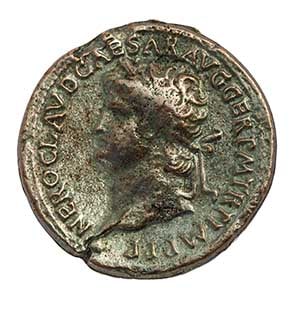
Investing in antique and collectable coins, (or numismatics as money collecting, coins and notes, is officially called), can be a fun pastime and a good way to invest money. It is more personal than simply buying stock in a commodity, and is something tangible you can enjoy too.
There are however a few points to keep in mind that may seem obvious but often get overlooked.
One of these is demand. Something is only as valuable as the demand for it, so a coin that was worth two hundred a few years back, may now only be valued at fifty. It is important to keep up with current trends.
If you are collecting simply because you enjoy it, this only matters when you are buying, as it affects how much you pay, but if this is also an investment it is also important when you are selling. This means you should not purchase a coin when its value is at its peak, because you will probably be unable to sell it for a profit.
Another significant detail is quality. While a coin may be rare and much sought after, if it is of low quality it can end up being worth considerably less than a more common coin. Rarity alone is not enough, it needs to be in a reasonable, if not good condition.
There are many old British coins, and they tend to have romantic names we all associate with times past, antique gold sovereigns and the shilling being probably the most widely used.
The only way to know for sure what a coin is worth is by doing research and keeping it up to date.
Ways to Build a Antique Coin Collection
You can collect coins by monarch; denomination, (the price stamped on them, not the price they fetch when sold); value and rarity, (although if you chose this as a basis your collection may be rather small as rare coins are, well… rare.) Old rare antique coins also come in three basic metals; gold, silver and bronze or copper, (sold under the one umbrella). The material alone is not an indication of value, for instance, a bronze/copper farthing from 1714 can be worth up to £2,000, whereas a gold sovereign from Elizabeth II dated 2014 will only fetch around £300, and that is if you are lucky. A Victoria gold sovereign, 1900, is only a fraction more valuable.
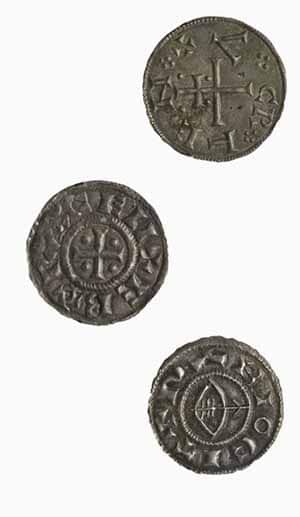
- Monarch
Going back a long time, from Henry II, 1154- 1189, up to George I, 1714 – 1727 coins are very few are far between, but from then on it is possible to come across coins for sale by just about every monarch since.
- Coin Denomination
The common old denominations are; Shilling, sixpence, threepence, old penny, crown, crowns, sovereign, half-sovereign, Florian, farthing. There are very many more, such as a double florin and quarter guineas, to name but a few.
- Coin Value
You can choose to collect by value, either the highest ones, medium-priced, or low-cost coins. A set of the lower-priced coins, if you get every domination and year, could actually be worth quite a bit more than the individual coins are. The same applied to any level of value naturally.
- Coin Rarity
This is a hard way to collect. Due to the very fact the coins are rare means there are few of them around, and collectors tend to hold onto any they have. When a rare coin comes onto the market there is often a frenzy to buy it, and this may drive the price up beyond its value.
- Coin Material
It might seem obvious that gold coins are worth more than bronze or copper ones, but that isn’t necessarily true. Coins like the Krugerrand are valued at the price of gold, but the history behind a coin can add a lot to its value, making an old penny more valuable than a gold or silver coin.
- Date Of Coin
Like material, date alone is also not enough to indicate what value a coin has. A rare George VI, 1950, penny is valued at around £25, while a ‘New Penny, 1971, was sold for £75, (go figure).
- Country Of Origin
By country is another way to collect that may be of interest. Simply put, collect all the Spanish coins you can, if Spain is your country of choice.
- Year
Or you might choose a year and set about buying coins from all the countries from that year.
There is no rule about how to collect or what theme you should follow. If it is for pleasure, simply chose whatever appeals to you the most, but if it is as an investment, try to find out what will offer the best return.
- Historical Significance
History enthusiasts collect coins that reflect a certain historic moment. Both World War I and II are perhaps the most commonly used for this purpose. Collectors try to get coins from every country involved in these struggles. There are many historical moments of note, so if this appeals, just look up the date and start searching for coins from that period.
Numismatics Terms
There are some terms used in numismatics, and as you will come across them often, it is important to know what they mean.
Types of coins and how they are described
- Bullion Coins
These are coins made from precious metals such as silver, and gold. They are generally traded on the current price for bullion, and not for the actual value of the coin. A normal gold Krugerrand coin, bought at the price of gold at that time, is worth whatever the gold price is when you are selling. This naturally means you should follow the gold price and buy when it is low.
- Commemorative Coins
These commemorative coins are made and issued specifically to honour a person, event or some important date in history.
- Error Coins
Occasionally, but seldom, an error happens. This may be an incorrect date, the classic double-headed penny conmen use for tossing a coin, an error in an inscription or any other deviation from the norm. These were usually recalled as soon as the mistake was discovered, so few made it into circulation.
- Proof Coins
Proof coins are made as collectable coins, and not intended as currency. For this reason they are made to the highest standard possible and that is what makes them attractive to collectors. They are visually more appealing, and as they were never used, should be in excellent condition.
- Uncirculated Coins
As the name suggests, these coins have never been used, so they are ‘as good as new’. In some cases an extra coin, or two, were made at the time of minting and were held back as ‘uncirculated’. This makes their numbers limited, and not always easy to come across. There is also Brilliant Uncirculated, which refers to a minting quality.
Different Parts of a Coin To Know About
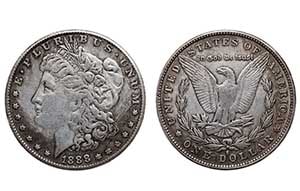
As everyone knows coins have two sides, heads and tails, but in numismatic terms these are referred to as obverse, (head) and reverse, (tail).
It is common to have a bust on the obverse side, and this is the main design. Information about the bust may also be inscribed here. The date of issue is generally found on the reverse side, along with the actual value of the currency.
Around the outer edge of a coin is a raised area called the rim.
The Edge is often referred to as the third side of a coin. This is the flat surface where the coin was cut out. The edge can be plain or ornate, with lettering, or milled (serrated).
The inscription on a coin is called the legend. It will probably identify the country of origin, the currency and value.
The background area of a coin, the part that does not have a design or inscription is called a field.
Other Terms
‘Struck’ means ‘minted’, or made.
An ancient coin is generally taken to mean one issued before C.E. 500.
The ‘Blue Book’ is the nickname used to refer to the ‘Handbook of United States Coins. This comes out annually and offers a guide to the price for U.S. coins. The name comes from its blue cover.
How Coins are Judged by Quality
This is called grading and a quick guide to how this works as follows;
- Poor (Po)
The coin has heavy wear and may be damaged
- Fair (Fr)
The coin is worn down almost flat or flat, but the design is at least partially visible. The date and lettering may be nearly gone or may not be legible.
- About Good (AG)
Slightly better than fair and some lettering and date are discernible.
- Good (G)
Most details can be seen, but it has obvious wear.
- Very Good (VG)
Better than good and the rim is complete.
- Fine (F)
The hair on the bust has worn flat and wear around the face and neck.
- Very Fine (VF)
A few strands of hair can be seen. Some wear on other parts.
- Extra/Extremely Fine (EF or XF)
Most of the strands of hair can be seen. A little wear on other features.
- Almost Uncirculated (AU)
Little wear, and rim may be perfect.
- Uncirculated (UNC) & Brilliant Uncirculated (BU)
There should be no damage or wear on these.
These are commonly used terms for grading coins, and they help determine the value of each coin, also its collectability.
Condition is perhaps the single feature that can most vastly reduce the value of any coin, so be wary of buying anything that is badly worn or damaged.
Your Antique & Collectable Coin Collection
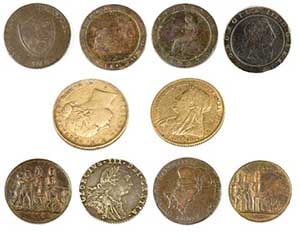
You have to start somewhere, so decide what you want and get going.
Yes they are metal, and yes they were handled by many people, but that doesn’t mean they are totally indestructible. Some react to the atmosphere, others to the oil on your skin, so storing safely and handling with care is no bad thing.
Set aside a place, coin album or even an antique box to keep them in – it is surprisingly easy to mislay a small coin. Cleaning is delicate without ruining the value, so be careful and look up what is it best to do, if anything, for each coin. Check out these antique coin cleaning tips….
As a general idea, do not touch them to clean, as even a soft cloth may have an adverse effect. Let the coin sit in soapy water for a day or two and rinse in clean water. Then leave to dry, (or use a hairdryer on cool). N.B. This works for many coins, but do check your own coin before applying this method to be sure you will not damage it or lower its value.
If you want this to be an investment as well as a hobby, do not collect random coins. A chaotic collection can lower the value, so set aside any that do not match the others and sell individually. It is as well to check out individual values anyway, as a set is not always the best way to sell.
Don’t be afraid to admit you need help, and nowadays there is a wealth of information online, so check out coins and their history, value etc. before spending money. You could also join a coin collectors club, as other members can offer advice.
Visit coin shows, exhibitions, auctions and antique stores, but remember the best value you will get is probably from a car boot sale or market where the seller is not an expert, and doesn’t know the true value. Be aware this can also work against you as many sellers believe their coin to be considerably more valuable than it really is. Be prepared to walk away if this is the case.
Know the value before buying, and unless a certain coin fills a specific void, set a top price you are prepared to pay, and do not go over it.
Note: As an amateur coin collector just starting out, and with limited knowledge, many years ago I bought a Buffalo Nickle at a market, just because I liked the name, and the price was very low at 20p. It is now worth around $200 – 280. Hardly an amount that would change my life, but a nice profit if I sold it nonetheless, (providing I do not count inflation).
10 Most Valuable Coins & What They Sold For
Here are a list of some antique and collectable coins and the amount they sold for;
- The 1794 Flowing Hair Silver Dollar
Sold in January 2013 for $10,016,875
- The 1787 Brasher Doubloon
Sold January 2021 for $9,360,000
- 1933 Double Eagle
Sold July 2002 for $7,590,020
- 1787 Brasher Doubloon (again)
Sold: December 2011 for $7,395,000
- 1787 Brasher Doubloon (again)
Sold: January 2014 for $4,582,500
- 1913 Liberty Head V Nickel
Sold August 2018 for $4,560,000
- 1804 Silver Dollar
Sold August 1999 for$4,140,000
- The 2007 $1 Million Canadian Gold Maple Leaf
Sold June 2010 for $4,020,000
- 1804 Bust Dollar
Sold August 9, 2013 for $3,877,500
- 1804 Bust Dollar (again)
Sold March 31, 2017 for $3,865,750
There are also; The 1787 Fugio cent; The 723 Umayyad Gold Dinar; The 1343 Edward III Florin; 1913 Liberty Head Nickel; The 1943 Lincoln Head Copper Penny; and many more, all of which have made spectacular prices.
A point of note regarding the Double Eagle:
The Double Eagles minted in 1933, were recalled and melted down because President Roosevelt banned people from owning gold. A few escaped melting, but not many.
One was recently sold for $18,900,000 on June 8, 2021, taking it to the head of the list. This is believed to be the most ever paid for a coin.
Krugerrands
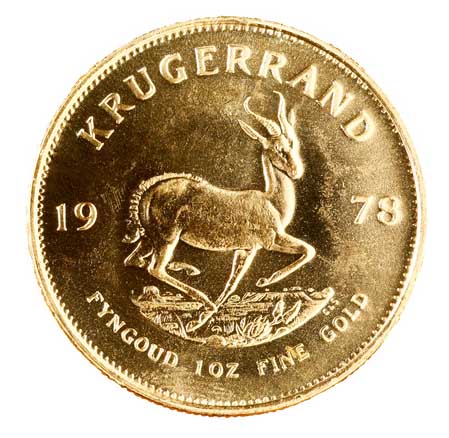
Gold Krugerrands have been a popular investment in gold for many years. They have no face value, their price being determined by the gold price for that day.
There is an assortment of weights of gold Krugerrands, including one ounce, half-ounce, quarter-ounce and one-tenth ounce.
A gold Krugerrands coin is extremely high quality22 carat gold. Pure gold is 24 carats, but is too soft to be made successfully into coins.
On the front is a bust of Paul Kruger, (last president of the Republic of South Africa), and these coins are named for him, along with the South African currency, the Rand. On the reverse is a springbok, a beautiful antelope from that region and symbol of South Africa. The coins are very lovely to look at, as well as being a good investment.
Old Krugerrands are not really worth more than new ones, as they are only valued at the price of gold, so there is little point wasting time searching for old coins. One will cost more to buy, so while you can sell them for more, the difference in profit is negligible.
Many sites selling these will also buy them back, and it is no bad thing to buy from a seller who offers this service as you have a guaranteed sale if you need to turn them back into cash. You will be offered a lower price than the site sells them for, after all, they do need to earn money on the transaction, but if you bought well you can still make a little. Selling privately may bring more money, but it might also leave you vulnerable to conmen or thieves, so be careful,
N.B. if you buy gold Krugerrands to sell, you are liable for capital gains tax (CGT) on the profit you make, but not so for Sovereigns which are exempt in UK. (Your profit needs to be in excess of £11,300 before CGT applies.)
Since they were first minted, Krugerrands have been legal tender, so you can use one to pay for your shopping, in South Africa, up to the market value of the gold they contain. It isn’t advisable to try this, and many shops will have no idea what to do with the coin, to say nothing of offering a vastly reduced value to cover themselves in case the price of gold drops.
Enjoy collecting and never spend more than you can afford. To view a range of quality antique and rare collectable coins for sale click here…
